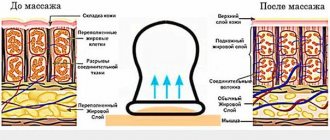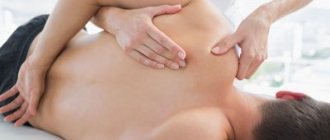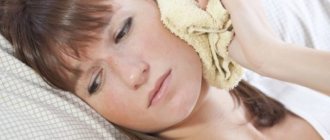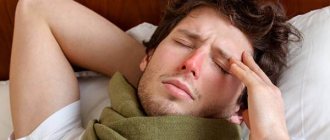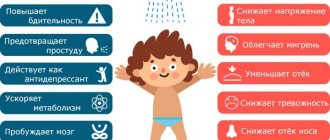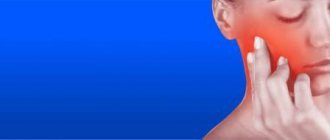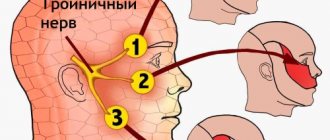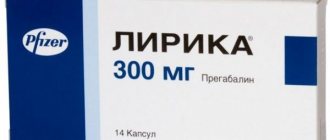Ulnar nerve neuritis is often accompanied by numbness and paralysis of the affected limb. This is due to a violation of the innervation of skeletal muscles in the forearm, hand and some fingers.
In the absence of timely treatment, muscle tissue atrophy and irreversible changes in the structure of the ulnar nerve are possible. The latter leads to complete loss of sensitivity and various motor activity disorders without the possibility of recovery.
What is the ICD-10 code?
Ulnar nerve neuritis is an inflammation of various etiologies affecting the myelin sheath and axial cylinders of the nerve fiber.
The pathology is accompanied by acute pain, loss of sensitivity and decreased motor activity of the affected arm.
Disruption of innervation gradually leads to atrophy of the surrounding muscles of the forearm and hand. The nerve is most often damaged in the area of the ulnar groove : at the entrance and exit from the cubital canal.
In the ICD-10 classification, inflammation of the ulnar nerve is not classified as a separate niche. Therefore, such neuritis has code G56.2.
What symptoms most often occur with ulnar nerve neuritis?
Sensitivity disorders due to neuritis are manifested by numbness in the area of the little and ring fingers, and the inner surface of the hand. At the same time, unpleasant sensations appear in these places: tingling, a feeling as if “goosebumps are crawling” on the skin. Pain in the hand may be bothersome.
Among the movement disorders, weakness is noted in the muscles that spread in different directions and bring the fingers together. The main phalanges (those that connect directly to the hand) of the fingers are extended (since another nerve, the radial one, is responsible for their extension), and the distal ones are bent. As a result, the hand acquires a characteristic appearance - doctors call it a “clawed paw” in their jargon. Gradually, the small muscles of the hand decrease in size and atrophy.
Autonomic disorders with ulnar nerve neuritis manifest themselves in the form of symptoms such as dryness or increased moisture of the skin, cyanosis, and coldness.
Causes
The most common cause of a neurological disorder is elbow injury . Neuritis of this etiology occurs in 28-34% of patients.
Prolonged bed rest with squeezing the arm between the body and the bed, puncture and cutting wounds, fractures and dislocations can lead to damage to the cubital canal.
In this case, there is a malnutrition and gradual destruction of the nerve fiber, accompanied by acute inflammation. In such a situation, the pathological process becomes chronic.
In some cases, neuritis manifests itself decades after the injury . This is due to the gradual progression of ligament fibrosis. Another name for the pathology is Miche's ulnar neuropathy.
Other causes of neuritis include:
- prolonged hypothermia;
- infectious lesions: diphtheria, typhoid fever, herpes virus, measles and brucellosis;
- vascular pathologies, ischemia in the elbow joint, in which the nerve stops receiving the required amount of oxygen and nutrients;
- alcohol poisoning, intoxication with heavy metal salts;
- epicondylitis, periarthrosis of the head of the humerus;
- diseases of the endocrine system: diabetes mellitus, thyroid disorders;
- compression of nerve tissue during sleep, with a sudden change in hand position;
- cervical osteochondrosis, herniated intervertebral discs: lead to compression of the vessels supplying the ulnar nerve.
In children, ulnar nerve neuritis often appears in the absence of timely vaccination against measles and typhus . The cause of the disease can be hypovitaminosis, congenital pathologies of the cubital canal.
In the latter case, there is compression of the nerve in the ulnar groove by a fibrous arch stretched between the heads of the flexor carpi.
Development of the disease due to work characteristics
Neuritis, which occurs due to pinching of the ulnar nerve, develops in office workers, operators or people in industrial production. The costs of the profession force people to often rest their elbows on the table, armrests or machines.
The disease can occur with prolonged overexertion of the arms in patients whose activities involve heavy physical labor. Over time, mechanical stress leads to injury, which causes neuritis.
Clinical picture: symptoms and manifestations
The intensity of symptoms depends on the degree of damage to the ulnar nerve and the individual characteristics of the patient. Peripheral nerve fibers consist of sensory, autonomic and motor neurons.
When each of them is damaged, the following clinical picture is observed:
- With neuritis, changes in tactile perception are observed in the area of the hand and fingers. Sensory neurons of the ulnar nerve do not innervate the skin of the forearm.
Numbness may develop, which is accompanied by a decrease or complete loss of sensitivity in the affected area.In some cases, paresthesia appears. When they occur, the patient feels tingling and frequent goosebumps.
- Impaired motor activity is accompanied by the appearance of paralysis or paresis.
The pathological process can cover the area from the elbow joint to the fingertips. There is muscle weakness in the skeletal muscles innervated by the ulnar nerve. If left untreated, atrophy and loss of tendon reflexes may develop. Due to lack of physical activity, the muscles decrease in size, so the affected forearm appears thinner when compared to the healthy arm. - Autonomic disorders are accompanied by trophic changes. The limb swells, blueness of the skin and depigmentation are observed. Hair falls out on the arm and sweating increases. Nails often break and trophic ulcers appear.
- When the ulnar nerve is pinched in the musculoskeletal canal, tunnel syndrome occurs.
The pathology is accompanied by pain . As the disease progresses, it leads to numbness of half the ring finger and little finger on the palmar side.
On the back of the hand, there is a loss of sensitivity in half of the middle finger and a complete loss of tactile perception in the ring and little fingers.
Numbness of the fingers is accompanied by muscle weakness, muscle wasting and atrophy. The brush resembles a bird's paw .
Possible patient complaints
Patients come with complaints of periodic numbness of the arm in areas innervated by the ulnar nerve. Loss of sensitivity is observed in the IV, V, half of the third finger on the back of the hand, the skin on the palms .
Numbness can be complete or partial depending on the severity of the pathological process. People report that after sensation is restored, there is tingling, burning, or cramping in the affected area.
Pain appears on the outside of the elbow joint . The pain syndrome often radiates to the thumb, ring finger, and little finger. The pain may spread to the shoulder area, the first third of the forearm.
Due to muscle weakness, patients cannot clench their hand into a fist. They often lose the ability to coordinate the movements of the affected arm. In severe cases of the pathological process, paralysis is observed .
How other types of neuritis of the extremities manifest themselves:
- brachial and median nerves;
- sciatic nerve;
- femoral, tibial and fibular.
What is ulnar nerve neuropathy
Neuropathy (neuropathy) is damage to one or another nerve, accompanied by loss of sensory and/or motor function (disease code according to the International Classification of Diseases, 10th revision - ICD 10 G56.2).
This article will talk about ulnar nerve neuropathy. Among all diseases of the nerves of the upper limb, ulnar neuropathy ranks second. This is due to some structural features of the hand. This article will discuss this in more detail, as well as diagnostic and treatment methods.
Compression
This type of neuropathy occurs during prolonged, uncomfortable, stationary work, due to compression by stiff ligaments and muscles . In order to better understand the mechanism, you need to understand the anatomy of the ulnar nerve.
It starts from the spinal cord, at the level of the 7th cervical and 1st thoracic vertebrae. Next, the nerve goes through the shoulder to the back of the arm, reaches the elbow joint, then down to the forearm.
On it, the ulnar nerve passes to the anterior surface of the arm and enters the narrow canal of the ulnar nerve (cubital). It further breaks down into separate nerves going to the palm and fingers.
As we can see, there are 3 possibilities for compression (squeezing) of the ulnar nerve.
- Behind the elbow joint, at the level of the epicondyle of the ulna. The nerve passes almost under the skin, so it is often damaged. For example, everyone knows the sharp pain when hitting an elbow on a hard surface.
- Between the flexor carpi ulnaris muscle and the bone: in the so-called cubital canal.
- In the canal of the ulnar nerve of the wrist (Guillaume's canal) Also sometimes the nerve can be damaged during the transition from the superficial part of the palm to the deep part. This type of compression is observed during sports activities.
Compression in the areas indicated above can occur for a variety of reasons. But usually this is long-term uncomfortable work in a non-physiological position. According to research, the nerve on the “leading” hand is twice as likely to be affected (that is, if a person is right-handed, then on the right and vice versa).
In the cubital canal (tunnel), neuropathy occurs due to prolonged holding of the elbows in one position on a desk, machine, workbench, for the driver when leaning on some part of the car cabin, etc.
Compressions in the wrist area (Guillaume's channel) occur when working at a computer, when a person is forced to sit at an uncomfortable keyboard, or move a computer mouse that is too high or, conversely, low for a long time. This pathology is widely known as “Tunnel syndrome”. Also due to working with tools for a long time, walking with crutches and a cane.
Tumors, arthrosis and arthritic changes in joints, and hematomas (bruises) after blows can compress the nerve all along the arm. You can press it while you sleep (this usually happens after taking a large dose of alcohol)
Post-traumatic
Neuropathy can be caused by trauma. These are most often dislocations of the elbow and wrist joints, as well as fractures, gunshot and household wounds, sprains and ruptures of ligaments, and blows.
After other diseases This type of disease occurs as a complication of any common diseases. For example, after acute infectious diseases: typhus and typhoid fever, syphilis, bites of certain insects (ticks), etc. Also for polyneuropathy due to diabetes mellitus, intoxication.
Help : it is recommended to take breaks during work and do a simple warm-up of your arms and back. This prevention will protect you from carpal tunnel syndrome and many other diseases.
Symptoms
With damage at the level of the cubital canal, first of all, patients pay attention to:
- Feeling of numbness in the fingertips, especially the little finger and ring finger, gradually spreading to all fingers and hand
- Weakness of the hands during work, reaching the point that it is difficult for the patient to pick up and hold any object
- Pain in the elbow area
These symptoms tend to progress slowly but surely. First one of them appears, then several and finally all.
//www.youtube.com/watch?v=MzvdyXsFvFM
If there is a lesion at the level of Guillaume's canal:
- Paresthesia (burning sensation, pins and needles) on the forearm and hand
- Insomnia or a person wakes up at night
- Increased or, conversely, decreased sensitivity to temperature on the hand
- Decreased elevation of the little finger (hypotenar)
- Problems with the movement of the fingers, especially the thumb
If the functions of the nerve are completely impaired, the patient experiences the so-called a symptom of a “clawed paw” - the fingers of the hand hang down, their movement is impossible. There is a gradual atrophy of the muscles innervated by the ulnar nerve. This makes a person disabled.
Important : do not let your brush get to this point. If you experience any discomfort in your hands, especially if you have the above-described provoking factors due to work or some habits, you should immediately consult a doctor.
Ulnar nerve neuropathy treatment
Treatment should be comprehensive, that is, use all available methods . It is necessary to perform exercises for the hands, and here the patient must be motivated to recover. First of all, provoking factors are identified and removed. These may be inconvenient tools for work, some habits.
If neuropathy is caused by a common medical condition, treat it aggressively. A special orthosis, elastic bandages and other orthopedic devices are put on the wrist.
Important : maintain a work-rest schedule, spend more time in the fresh air, eat vegetables and fruits, and foods containing calcium.
Drug therapy
In mild cases, non-steroidal anti-inflammatory drugs (aspirin, diclofenac) are prescribed. If the cause of compression may be edema, then diuretics (Lasix, etc.).
Novocaine, analgin, and glucocorticosteroids are injected into the affected area (elbow or wrist). The dosage depends on the patient’s age, severity of the disease, and concomitant diseases.
It is advisable to rub pain-relieving ointments and gels onto the area of nerve damage.
Vitamins
Help restore immunity. Strengthen metabolism in the nerve, eliminate ischemia, expand capillaries. Used: Vitamins B1, B6, as well as complex preparations: Milgamma. They are prescribed intramuscularly, or you can inject directly into the area of compression or injury to the ulnar nerve.
It will be useful to take multivitamin complexes internally.
Physiotherapy as an additional method can help in treatment. Are used:
- Magnetotherapy
- Massage
- Electrophoresis of various drugs, such as novocaine
- Reflexology
- Ultrasound irradiation
- Sanatorium-resort treatment in specialized institutions
Surgical intervention
If there is no effect in conservative treatment, you have to resort to surgery. 1) Dissection of the canals in which compression of the nerve occurs. You can also, for greater efficiency, pull out and move the nerve to another place (transposition). 2) Neurolysis and nerve suture. Used for hand injuries.
3) Removal of the epicondyle of the ulna (with cubital compression)
The operations are performed with minimal incision and blood loss. Some hospitals use endoscopes. It should be noted that sometimes after surgery the condition may worsen.
Physiotherapy
Simple exercises can effectively relieve ulnar neuropathy.
1. Clench your hand into a fist, unclench your fingers one by one.2. Rotate the hand clockwise and counterclockwise at the wrist joint.3. Exercise with a manual expander.4. If your fingers are difficult to straighten, try to collect small objects (coins, keys, children's cars, etc.), then throw them and collect them again.5.
Modeling from plasticine, dough, finger painting with paint, etc. will be beneficial.6. In water, clench your hand in a fist and sharply straighten it upward7. Try to grasp a piece of paper with your thumb and forefinger8. Roll a special ball with spikes - the so-called. Su Jok therapy9. Self-massage the affected arm once a day
10.
After exercise, take a bath with pine needles and sea salt.
All exercises, unless otherwise stated, should be performed 15 times, several times a day.
Find out more in this video
Conclusion
In case of ulnar nerve neuropathy, it is important to contact a neurologist in a timely manner. The later treatment is started, the less effect it will have. Be healthy.
Source: //spine.guru/spine-diseases/nejropatiya/loktevogo-nerva.html
Diagnostic methods
Diagnosis and determination of further treatment regimen is carried out by a neurologist. The specialist collects anamnesis and records the patient’s main complaints in the medical history. After this, the neurologist conducts a visual examination.
With ulnar nerve neuritis, the hand takes on the appearance of a bird's paw: the third and fourth fingers are bent, the little finger is moved to the side. The doctor notes cyanosis, hair loss, brittle nails, and weight loss in the affected limb.
After the examination, the neurologist conducts a series of neurological tests to determine muscle strength, degree of numbness and loss of reflexes and makes a preliminary diagnosis.
To confirm the initial conclusion, the specialist prescribes laboratory and instrumental examinations , which allow us to find out the cause of neuritis:
- General and biochemical blood test . Necessary for identifying pathogenic agents of infectious diseases, the presence of produced antibodies and leukocytes.
- X-ray using contrast .
Allows you to assess the condition of the vessels supplying the ulnar nerve. X-rays also make it possible to take into account the anatomical features of the elbow joint and cubital canal, and to identify the degree of damage to the musculoskeletal tunnel in the event of injury. - Ultrasound and MRI . Ultrasound and magnetic resonance imaging help assess the condition of blood vessels, soft tissues and bone structure in case of fractures, pinched nerves and other injuries.
- Electroneuromyography . The procedure helps determine the extent of damage to the skeletal muscles.
Special diagnostic criteria for determining the disease
Neurological tests to make a preliminary diagnosis of ulnar neuritis often include the following:
- Pitre's test. To carry it out, the patient must place his palm on the table and try to spread and close his fingers. With neuritis, the patient cannot bring the ring finger and little finger to the midline.
- Afterwards, the doctor asks the patient to try to scratch the surface of the table with his little finger. Due to inflammation of the nervous tissue, he is unable to do this.
- With neuritis, the patient cannot clench his hand into a fist, or hold a sheet of paper with two fingers. When you clench your hand into a fist, the middle, ring and little fingers do not bend.
- If the patient presses the hand firmly to the table, the little finger moves to the side. In this position, the patient cannot make horizontal movements of the third, fourth, fifth finger.
What diseases should be distinguished from?
After recording the patient's complaints in the medical history, differential diagnosis with radial nerve neuritis is carried out . In contrast to damage to the ulnar nerve, in this situation the hand hangs down and a strong muscle spasm is observed.
If the radial nerve is damaged, the patient cannot straighten the hand independently; the thumb is reduced to the index finger. The sensitivity of the 1st, 2nd, and 3rd fingers of the affected limb is impaired.
It is difficult to distinguish ulnar nerve neuritis from damage to the C8 nerve root in the neck due to radiculopathy . With radicular syndrome, numbness is observed on the ulnar surface of the forearm, which is not typical for neuritis. With inflammation of the ulnar nerve, only numbness of the hand is observed.
When conducting a differential diagnosis, the neurologist pays attention to the presence of a specific symptom of ulnar nerve neuritis - numbness of the radial surface of the ring finger.
When the nerve roots of the spine, spinal cord, or plexus are affected, there is a loss of sensation in the entire finger.
Features of treatment
Treatment begins with fixation of the hand and forearm in a plaster splint , thanks to which the elbow joint remains at rest.
The hand is in a half-bent state. The patient should suspend the limb using a scarf or bandage.
When developing a treatment regimen, the neurologist focuses on eliminating the cause of the neurological disorder. For this purpose , drug therapy is carried out, physical therapy and massage are prescribed .
In case of infection, after identifying a pathogenic pathogen, the doctor prescribes antiviral drugs or antibiotics. If blood circulation is impaired, the patient is prescribed a vasodilator to restore trophism of the nervous tissue. It allows you to eliminate the consequences of ischemia.
To eliminate swelling of the ulnar nerve, the patient should take potassium-sparing diuretics and NSAIDs.
For pain relief in high intensity pain syndrome, the use of analgesics is indicated. B vitamins help speed up the recovery of nervous tissue.
After 2 weeks from the start of drug therapy, complex treatment is supplemented with physiotherapy:
- ultraphonophoresis;
- electrophoresis with the introduction of analgesics and biogenic stimulants;
- UHF therapy;
- magnetic therapy;
- electrical stimulation for muscle tissue damage;
- acupuncture.
Massage technique
Massage helps relieve pain, accelerate nerve fiber regeneration , and restore original sensitivity and motor activity. The patient must undergo a course of 15-20 procedures.
Massaging begins with the cervical and thoracic spine. This is necessary to ensure blood flow to the affected limb.
Afterwards, a preliminary massage of the sore arm is carried out using the following techniques:
- tong-like rubbing;
- kneading stiff muscles;
- stroking.
After this, the specialist massages the skeletal muscles innervated by the ulnar nerve . To do this, he uses muscle kneading, vibration, rubbing with his fingers, and pressing with the pad of his thumb. The total duration of the procedure is about 10-15 minutes.
Massaging the ulnar nerve is carried out in the area between the process of the ulna and the medial epicondyle of the head of the humerus. To gain access to the lesion, the arm is slightly bent at the elbow.
Exercise therapy
Physical activity is introduced into the treatment program 48 hours after the splint is applied . Physical therapy consists of the following exercises:
- It is necessary to bend your arm at the elbow and lean on the table so that your forearm is perpendicular to its surface. After this, you need to bend your index finger down, then raise your thumb up. Movements should be alternated.
- The arm bent at the elbow joint should be placed on the table top. Then you need to bend the second finger down, lift the third up. With the other hand, you should alternately bend and straighten the remaining fingers in the middle and main phalanx.
Exercises are repeated at least 10-15 times . To increase the effectiveness of therapeutic exercises, it is recommended to lower the sore hand into a basin of warm water.
Therapy for post-traumatic joint inflammation
Treatment of neuritis resulting from injury is carried out depending on the nature of the injury. Penetrating wounds are sutured and treated with medications and physical procedures .
If neuritis appears due to compression in the cubital canal with the subsequent occurrence of tunnel syndrome, the patient is prescribed local administration of drugs.
Painkillers and hormonal medications necessary to relieve pain, soft tissue swelling and reduce the activity of the inflammatory process are injected into the musculoskeletal canal .
In case of severe compression of the nerve, which usually occurs with fractures and dislocations, surgery is prescribed. Surgery is performed for the purpose of decompression .
Patients with destructive changes in the ulnar nerve resulting from prolonged inflammation may be referred for surgery. In such a situation, the damaged nerve fiber is sutured and repaired.
Tactics for treating the disease
If the diagnosis revealed ulnar nerve neuritis, the doctor selects adequate treatment. This means that you need to get rid of the causes and eliminate the symptoms that cause maximum discomfort to the patient.
Important! The approach to therapy must be comprehensive, otherwise the desired result will not be achieved.
You should also remember that treatment only with medications or traditional recipes is not the best choice. The use of one method leads to the fact that any area of the disease falls out of attention. For example, drug therapy without exercise therapy deprives the patient of the opportunity to restore the strength of damaged structures and restore normal limb mobility.
Drug therapy
The main goal of treating ulnar nerve neuritis is to eliminate pain when it comes to medications. It is also necessary to relieve swelling, improve blood circulation and nutrition to the damaged area.
Important! One of the best groups of drugs that help in the fight against pain and inflammation are NSAIDs: Diclofenac , Ibuprofen , Nimesulide .
Edema is eliminated with the help of diuretics, and B vitamins are prescribed to improve the condition of muscle tissue. There is another unique drug used in the treatment of neuritis - Neuromidin . It restores damaged nerve fibers in terms of the conduction of electrical impulses through them.
Blockade of ulnar neuritis involves the use of corticosteroids (hormones) mixed with an anesthetic - novocaine or lidocaine. The blockade relieves pain for several hours if NSAIDs no longer help. The blockade must be performed by a specialist - in a medical office. For administration, special needles and syringes are used.
Ointments for neuritis
To eliminate inflammation and pain, topical medications are often used. Products such as Voltaren and Nise in the form of gels belong to the group of NSAIDs and have the same effect as tablets, only by bypassing the gastrointestinal tract.
There are homeopathic products that are very powerful and effective, but dangerous for people prone to allergies. We are talking about bee and snake venom, which is rubbed into the area of the affected elbow. You must first pass tests to ensure that these products are safe for health.
You can find recipes for turpentine ointment, but the effect of this substance on the skin is more dangerous than the benefits obtained in the treatment of elbow neuritis.
Physiotherapy
Without physiotherapeutic methods, treatment of ulnar nerve neuritis would be incomplete. They work best on diseased fibers:
- electrophoresis with analgesics and antispasmodics;
- massage, including acupressure or using oriental techniques with needles;
- laser therapy;
- electrical stimulation of muscles.
Only after treatment with medications and physiotherapy has begun, the patient can discuss traditional recipes with the doctor.
Traditional medicine
It is permissible to treat ulnar nerve neuritis with the consent of a doctor. Most often, rubs and infusions for compresses are prepared:
- fresh leaves of horseradish, cabbage or burdock are applied to the sore elbow;
- instead of pharmaceutical ointments, bear fat is used;
- You can leave the red clay compress on overnight;
- Take a decoction of raspberry leaves orally - 3 tbsp. l. before meals;
- You can prepare a decoction of orange and lemon balm peels, taken in equal parts, mix it with valerian infusion and take it orally for a month.
Physical exercises are designed to complement traditional recipes and drug therapy.
Exercise therapy and gymnastics for neuritis
Physical education improves blood circulation and metabolism - the main conditions for successful treatment of the ulnar nerve. You can exercise anywhere for 10-15 minutes several times a day.
For neuritis, exercises related to the thumb of the palm are useful. They can be rotated in different directions, raised and lowered, connecting with other fingers, and squeezed the phalanges without strong pressure. Exercises with clay or plasticine are a great help in restoring mobility.
When is surgery needed?
Surgery for ulnar neuritis is prescribed only in advanced cases. It is called neurolysis; during the procedure, the canal in which the nerve is located is widened, a new passage is formed and the ulnar fiber is transferred there. Sometimes the palmar ligament needs to be cut to repair the nerve area in the fingers.
After the operation, the patient undergoes rehabilitation for at least 6 months. It also includes drug therapy, folk remedies, exercise therapy and physiotherapy.
Source
Prognosis and prevention
With timely treatment, a favorable prognosis for recovery is observed.
With mild to moderate severity of the pathology, sensitivity and motor activity are restored within 8-10 weeks. Rehabilitation against the background of severe pathology takes a longer time.
To prevent the development of neuritis, it is recommended to resort to the following preventive measures:
- promptly treat infectious and viral diseases;
- keep the body warm, prevent hypothermia;
- balance the diet;
- avoid increased physical stress on your hands;
- to refuse from bad habits.
People who are indicated for long periods of bed rest are advised to take a comfortable position . Paralyzed or comatose patients need to change body position every 2 hours and massage the elbow joint area.
Ulnar nerve neuritis is accompanied by inflammation of the nerve tissue, which impairs sensitivity and motor activity of the hand.
The disease is easy to diagnose by the external manifestations of the pathological process : the hand bends like a bird's paw, the patient feels tingling, numbness and muscle weakness.
To treat the disease, complex therapy is carried out with drugs, exercise therapy, massage and physiotherapy. Rehabilitation with timely diagnosis and initiation of treatment is possible within 2 months.
Causes of the disease
A variety of factors can trigger ulnar nerve neuritis, from illness to injury. External traumatic mechanism is the most common cause of nerve damage:
- dislocations of the hands, forearm, elbow;
- bruises of the limbs;
- fractures of the elbows, arms, hands and shoulders.
Due to injuries, compression of the cubital canal develops. But other factors—diseases—can also trigger the pathology mechanism:
- purulent, infectious and viral lesions of joints;
- deforming joint diseases - arthrosis, arthritis;
- damage to the nerve sheaths, characteristic of various types of sclerosis;
- vascular aneurysms compressing the nerve;
- neoplasms and processes that cause enlargement of lymph nodes.

